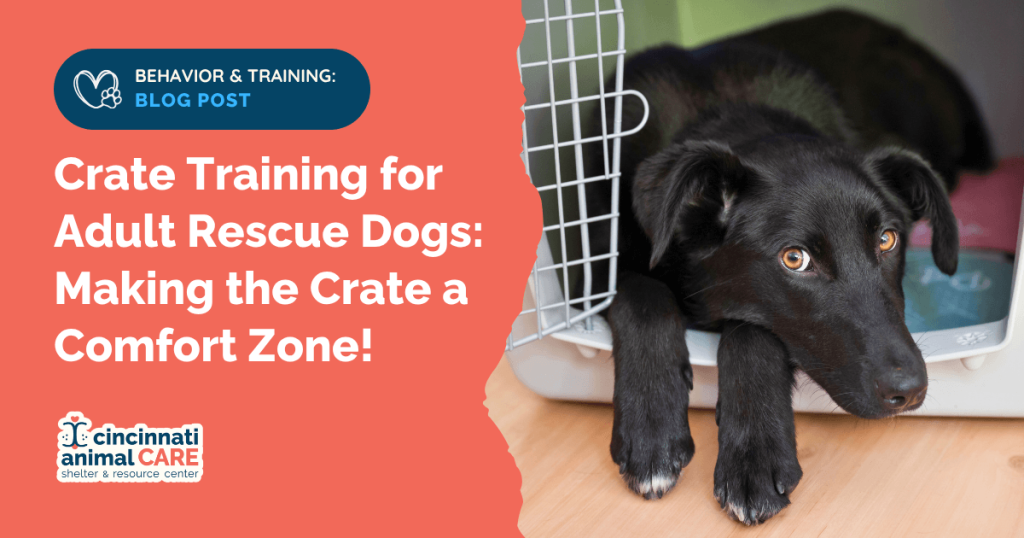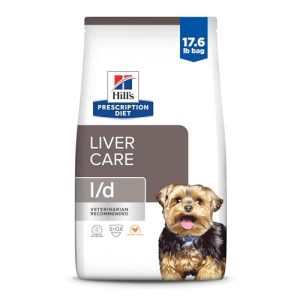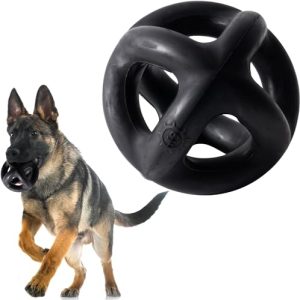Crate training an older dog might seem challenging, but it’s easier than you think. Whether your dog is new to your home or has never used a crate before, you can help them feel safe and comfortable inside.
Imagine having a calm, happy dog who enjoys their own cozy space—this guide will show you exactly how to make that happen. Keep reading, and you’ll discover simple steps to turn the crate into your dog’s favorite spot.

Credit: www.youtube.com
Benefits Of Crate Training Older Dogs
Crate training older dogs offers many benefits for both pets and owners. It provides a safe space that helps reduce stress and anxiety. Older dogs can feel secure in their crate, which becomes their personal area. This training also supports better behavior at home. Crates help manage dogs during times when supervision is limited. It encourages good habits and prevents unwanted accidents or chewing.
Provides A Safe And Comfortable Space
A crate gives an older dog a quiet place to relax. It acts like a den, helping dogs feel protected and calm. Older dogs often enjoy having their own spot away from noise and activity. This space can reduce anxiety and improve their overall mood.
Helps With House Training And Routine
Crate training assists with housebreaking, even for older dogs. It teaches them to hold their bladder and bowels until they go outside. The crate creates a routine, making it easier to predict when they need to go out. This routine reduces accidents inside the home.
Supports Behavioral Improvement
Using a crate helps control unwanted behaviors like chewing or barking. It provides a boundary that dogs learn to respect. Older dogs benefit from this structure, which can decrease stress-related actions. The crate encourages calm and positive habits over time.
Makes Travel And Vet Visits Easier
Older dogs trained to use a crate feel less stressed during travel. The crate is a familiar space that offers comfort away from home. It also makes vet visits smoother, as the dog feels secure. This reduces fear and makes handling easier for everyone.
Protects Your Dog When Unsupervised
The crate keeps older dogs safe when you cannot watch them closely. It prevents them from getting into harmful situations or chewing dangerous items. This protection is important for dogs with limited mobility or health issues. It gives owners peace of mind during busy times.
Choosing The Right Crate
Choosing the right crate is key for crate training an older dog. The crate should feel safe and welcoming. Comfort and proper size help your dog relax inside. A crate that fits well can reduce anxiety and build trust.
Consider the crate’s features carefully. The material and style affect your dog’s comfort and your home’s space. Picking the right crate makes the training easier and more effective.
Size And Comfort
The crate must be big enough for your dog to stand, turn, and lie down. Too small feels cramped; too large may feel unsafe. Measure your dog from nose to tail and add a few inches.
Comfort is important for older dogs. Add soft bedding or a blanket inside. Make sure the crate has good ventilation. A cozy space encourages your dog to rest calmly.
Types Of Crates
There are several crate types to choose from:
- Wire Crates:Lightweight and well-ventilated. Provide visibility and airflow.
- Plastic Crates:Enclosed and cozy. Great for travel and security.
- Fabric Crates:Soft and portable. Best for calm dogs and short stays.
- Heavy-Duty Crates:Strong and durable. Suitable for strong or anxious dogs.
Select a crate type that suits your dog’s personality and needs. The right crate creates a safe haven for your older dog.
Preparing Your Dog For The Crate
Preparing your older dog for crate training is essential for a smooth experience. It builds trust and reduces anxiety. The goal is to make the crate a safe and comfortable place. This process takes patience and gentle guidance. Gradual introduction helps your dog accept the crate without fear.
Creating A Positive Space
Make the crate inviting and cozy. Use soft blankets or a dog bed inside. Place some favorite toys to encourage interest. Keep the crate in a quiet but familiar area. This helps your dog feel secure.
Feed meals near or inside the crate. This creates a good connection with the space. Praise your dog for calm behavior around the crate. Avoid forcing your dog inside. Let them explore at their own pace.
Introducing The Crate Gradually
Start by leaving the crate door open. Allow your dog to enter and exit freely. Use treats to reward curiosity and calmness. Keep initial sessions short and positive. Slowly increase the time your dog spends inside.
Stay nearby during early crate time. Speak softly to reassure your dog. Avoid shutting the door too soon. Watch for signs of stress or discomfort. Patience is key; progress may take days or weeks.
Step-by-step Crate Training Process
Starting crate training with an older dog requires patience and a clear plan. The key is to make the crate a safe and inviting space without overwhelming your dog. You’ll want to build positive associations gradually, so your dog feels comfortable and even happy to spend time inside.
Short Sessions With Rewards
Begin by introducing your dog to the crate for just a few minutes at a time. Keep the door open initially and toss in some tasty treats or a favorite toy. Let your dog explore freely without forcing them inside.
Once your dog steps in voluntarily, praise them enthusiastically and offer a reward. This helps your dog link the crate with good things. Repeat these short sessions several times a day, slowly increasing the length as your dog shows comfort.
Have you noticed your dog’s body language? If they seem hesitant, slow down and add more treats or playtime inside the crate. The goal is to make every visit positive and stress-free.
Increasing Crate Time Safely
After your dog accepts short crate visits, start closing the door briefly. Begin with just a few seconds, then open it and reward your dog right away. Gradually increase the time the door stays closed, but always stay nearby to reassure your dog.
Watch for signs of anxiety like whining or scratching, which means you might be moving too fast. Instead, hold the time steady or shorten it until your dog feels relaxed. Remember, slow progress prevents setbacks.
Try leaving your dog in the crate while you’re in the same room at first. Then, step out for short periods, gradually building up to longer absences. This teaches your dog that being in the crate is safe, even when you’re not around.
Handling Common Challenges
Crate training an older dog comes with its own set of challenges. Your dog might not see the crate as a safe or comfortable space right away. Handling these common obstacles with patience and the right approach can make a big difference in how quickly your dog adapts.
Dealing With Anxiety
Many older dogs feel anxious when introduced to a crate. The crate can seem like a confinement rather than a cozy den. To ease this anxiety, make the crate inviting by adding your dog’s favorite blanket or toy.
Try feeding your dog meals inside the crate to create positive associations. If your dog whines or scratches, resist the urge to let them out immediately. Instead, wait for a calm moment before opening the door to teach them patience.
Have you noticed any specific triggers that make your dog anxious? Identifying these can help you adjust your approach and provide comfort exactly when needed.
Managing Resistance
Resistance often shows up as outright refusal to enter the crate or trying to escape. This behavior can be frustrating, but it’s essential to stay consistent and calm. Start with short, frequent sessions where your dog can explore the crate freely without pressure.
Use treats and praise generously when your dog voluntarily goes inside. Avoid forcing your dog, as this can increase resistance. Instead, let your dog set the pace, even if progress feels slow.
Sometimes, changing the crate’s location to a busier or quieter area can affect your dog’s willingness. Have you tried observing when your dog seems most relaxed and using that time to encourage crate time?
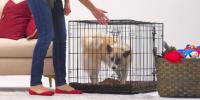
Credit: www.purina.com
Maintaining Consistency And Patience
Maintaining consistency and patience is key when crate training an older dog. Older dogs may take longer to adjust to new routines. Staying calm and steady helps them feel safe and confident. Patience reduces stress for both you and your dog during this process.
Consistency builds trust and understanding. Dogs learn best when rules stay the same every day. Keep training sessions regular and predictable. This helps your dog know what to expect and what you want.
Creating A Daily Routine
Set specific times for crate training. Use the crate at the same times each day. This could be during meals, rest periods, or short alone times. A routine helps your dog get used to the crate as part of daily life.
Using Positive Reinforcement
Reward your dog for calm behavior in the crate. Use treats, praise, or gentle petting. This encourages your dog to enjoy the crate. Avoid punishment, as it can cause fear or confusion.
Keeping Training Sessions Short
Start with brief crate sessions. Gradually increase the time your dog stays inside. Short sessions prevent frustration and build comfort. Watch your dog’s behavior and adjust timing as needed.
Responding Calmly To Setbacks
Expect some mistakes or resistance. Stay patient and don’t get angry. Calmly guide your dog back to the crate routine. Consistent, gentle responses help your dog learn faster.
Monitoring Your Dog’s Comfort
Watch for signs of stress or anxiety. Panting, whining, or scratching may mean your dog is uncomfortable. Adjust your approach to make the crate a safe place. Comfort is essential for successful training.
Additional Tips For Success
Additional tips can help make crate training easier for an older dog. These ideas build comfort and trust. They also create positive habits that last. Using simple tools and routines can speed up the learning process.
Using Toys And Treats
Toys and treats make the crate a happy place. Choose soft toys your dog likes. Chew toys help reduce stress and boredom. Place treats inside the crate to encourage entry. Reward your dog for calm behavior inside the crate. Use treats to gently guide your dog in and out. Avoid overfeeding treats to keep training effective.
Setting A Routine
Dogs thrive on routine, especially older ones. Set regular times for crate use during the day. Include crate time before and after walks. Keep crate sessions short at first, then increase gradually. Consistency helps your dog feel safe and secure. A clear routine reduces anxiety and builds trust.
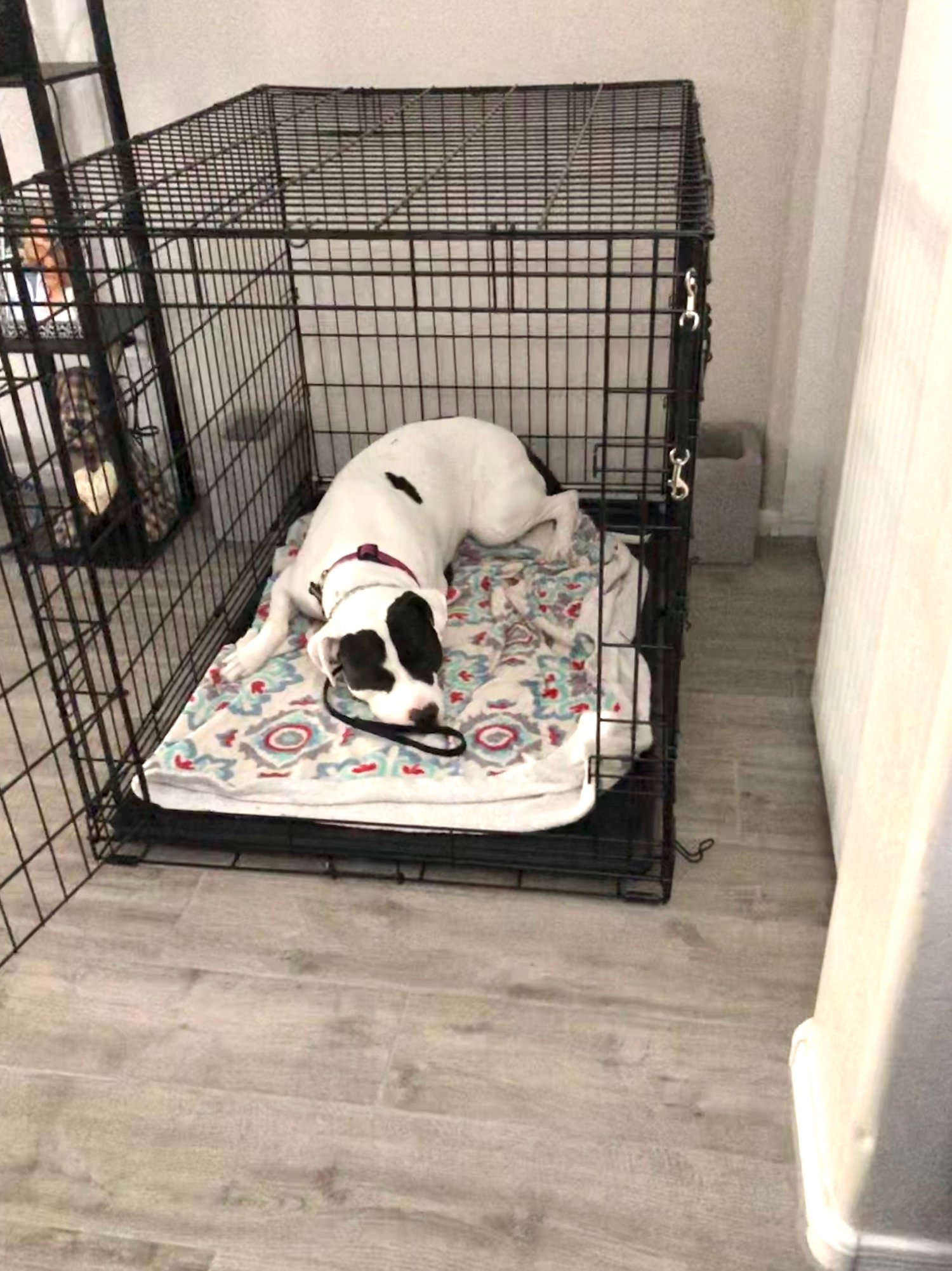
Credit: www.sadiesrulesk9training.com
Frequently Asked Questions
How To Start Crate Training An Older Dog?
Begin by selecting the right crate size for your dog. Introduce the crate as a positive space. Use treats and toys to encourage exploration. Gradually increase the time your dog spends inside. Patience and consistency are key to successful crate training.
Can Older Dogs Learn To Love Their Crate?
Yes, older dogs can learn to love their crate. By associating the crate with positive experiences and comfort, dogs can develop a sense of security. Ensure the crate is a stress-free environment. Comfort items like a favorite blanket can help.
How Long Does Crate Training Take For Older Dogs?
Crate training an older dog can take several weeks. The exact time depends on the dog’s temperament and past experiences. Consistency and positive reinforcement are crucial. Be patient and adjust the training process as needed to match your dog’s comfort level.
What If My Older Dog Refuses The Crate?
If your dog refuses the crate, try using treats and toys to entice them. Make the crate comfortable with bedding. Avoid forcing them inside. Gradually introduce the crate in short intervals, increasing the duration as they become more comfortable.
Conclusion
Crate training an older dog takes time and patience. Start slow and keep sessions short. Use treats and praise to build trust. Let your dog explore the crate at their own pace. Consistency helps your dog feel safe and happy.
Small steps lead to big progress. Remember, every dog learns differently. Stay calm and positive throughout the process. Soon, your dog will see the crate as a cozy space. Enjoy the journey of training together.

Emily Barker is the founder of ChillDogLife.com, a space dedicated to helping pup parents discover the best dog products, lifestyle tips, and cozy ideas for happier homes.
A lifelong dog lover, Emily combines her passion for pets with a knack for research to share trusted recommendations on everything from toys and furniture to health and everyday care.
Her goal is simple: to make life easier, stylish, and more joyful for dogs and the people who love them.
